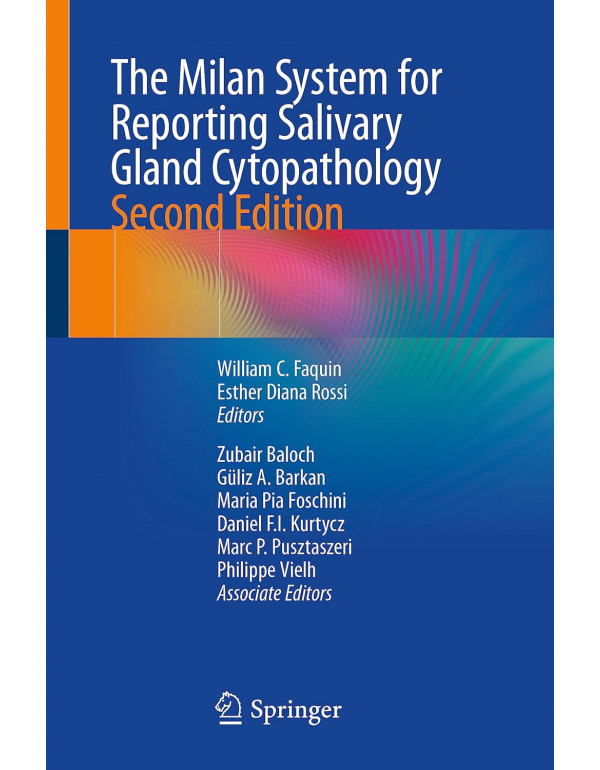The Milan System for Reporting Salivary Gland Cytopathology, 2nd Edition (2023)
Overview:
This updated edition of "The Milan System for Reporting Salivary Gland Cytopathology" establishes a standardized reporting framework for fine-needle aspiration (FNA) of salivary gland lesions. It categorizes these lesions into distinct diagnostic groups with defined risk-of-malignancy (ROM) percentages, aiding in clinical decision-making for patient management.
Key Themes:
- Standardized FNA reporting: Promotes clear and consistent communication of FNA results for salivary gland lesions across institutions.
- Risk stratification: Categorizes lesions based on their estimated risk of malignancy, guiding decisions about patient management (surgery, surveillance).
- Enhanced diagnostic accuracy: Offers a structured reporting framework to improve the accuracy of FNA diagnoses.
- Clinical utility: Provides a practical tool for clinicians to determine the most appropriate course of action for each patient.
- Incorporates advancements: Reflects recent developments in salivary gland cytopathology and addresses feedback from the first edition.
Features:
- Second edition: Captures the latest knowledge and best practices in the field.
- Evidence-based approach: Recommendations are grounded in current research and clinical experience.
- Multi-institutional expertise: Compiled by a team of cytopathologists representing various institutions.
- Well-defined diagnostic categories: Provides specific criteria for classifying FNA results.
- Risk-of-malignancy estimates: Assigns ROM percentages to each diagnostic category.
- Algorithm-based guidance: Offers a structured approach to interpreting FNA findings and formulating diagnoses.
- Ancillary test considerations: Discusses the role of additional tests (e.g., immunohistochemistry) in refining diagnoses.
Target Audience:
- Cytopathologists
- Pathologists
- Head and neck surgeons
- Otolaryngologists
- Residents and fellows in cytopathology and pathology
Strengths:
- Standardization: Promotes consistent reporting and reduces diagnostic variability.
- Improved patient care: Enhances diagnostic accuracy and facilitates optimal clinical decision-making.
- Evidence-based: Recommendations are grounded in scientific data.
- Practical and user-friendly: Offers a clear and concise framework for reporting FNA results.
- Comprehensive: Covers all aspects of salivary gland cytopathology relevant to FNA diagnosis.
Chapter Headlines: (Examples only, may vary in the actual book)
- Part I: Introduction and Background
- Chapter 1: Introduction to Salivary Gland Cytopathology and the Milan System
- Chapter 2: Historical Development of the Milan System
- Part II: The Milan System Reporting Categories
- Chapter 3: Non-diagnostic (ND) Category
- Chapter 4: Benign (B) Category
- Chapter 5: Atypia of Unknown Significance/Follicular Lesion (AUS/FL) Category
- Chapter 6: Suspicious for Malignancy (SM) Category
- Chapter 7: Malignant (M) Category
- Part III: Ancillary Testing and Other Considerations
- Chapter 8: The Role of Ancillary Testing in Salivary Gland Cytopathology
- Chapter 9: Reporting Issues and Controversies in Salivary Gland Cytopathology
- Part IV: Implementation and Future Directions
- Chapter 10: Implementation of the Milan System
- Chapter 11: The Future of Salivary Gland Cytopathology
Closing Paragraph:
"The Milan System for Reporting Salivary Gland Cytopathology, 2nd Edition" remains an essential resource for cytopathologists and clinicians involved in diagnosing and managing salivary gland lesions. By providing a standardized and evidence-based reporting system, this book facilitates accurate diagnoses and promotes optimal patient care.
 4.1 (6) Reviews
4.1 (6) Reviews
